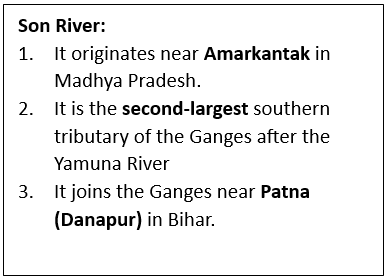- Courses
- GS Full Course 1 Year
- GS Full Course 2 Year
- GS Full Course 3 Year
- GS Full Course Till Selection
- MEP (Mains Enrichment Programme) Data, Facts
- Essay Target – 150+ Marks
- Online Program
- GS Recorded Course
- NCERT- First Ladder
- Polity
- Geography
- Economy
- Ancient, Medieval and Art & Culture AMAC
- Modern India, Post Independence & World History
- Environment
- Governance
- Science & Technology
- International Relations and Internal Security
- Disaster Management
- Ethics
- Current Affairs
- Indian Society and Social Issue
- CSAT
- 5 LAYERED ARJUNA Mentorship
- Public Administration Optional
- ABOUT US
- OUR TOPPERS
- TEST SERIES
- FREE STUDY MATERIAL
- VIDEOS
- CONTACT US
Illegal Sand Mining
Illegal Sand Mining
29-12-2023
Context
Recently, Bihar police apprehended sand smugglers in an operation near the Sone River, marking a substantial advancement in the continuous fight against formidable criminal syndicates engaged in unlawful sand mining.
Sand mining
Sand mining is the extraction of sand from various sources, such as rivers, lakes, coastal areas, agricultural fields, and manufactured sand.
Sources of sand mining
- River flood plain, which accounts for about 80% of the total sand production in the country.
- Coastal sand, which is mainly found along the coasts of Gujarat, Maharashtra, Goa, Karnataka, Kerala, Tamil Nadu, Andhra Pradesh, Odisha, and West Bengal.
- Paleo channel sand, which is the remnant of ancient river courses that are buried under the present land surface.
- Sand from agricultural fields, which is extracted from the topsoil of cultivated lands.
- Manufactured sand, which is produced by crushing rocks, rubble, slag, and mines refuse.
Causes of illegal sand mining |
Effects of illegal sand mining |
|
|
|
|
|
|
|
|
|
|
Some of the initiatives to arrest sand mining in India are:
- The Enforcement & Monitoring Guidelines for Sand Mining 2020, which provide a framework for the states to regulate sand mining and check illegal mining.
- The India Sand Watch platform, which aims to monitor every stage of both legal and illegal sand mining operations in the country using technology and activism.
- The no-mining zones, which aim to protect river ecosystems from sand mining by identifying and demarcating areas where mining is prohibited.
Some of the possible ways to stop illegal sand mining in India are:
- Establishing no-mining zones to protect river ecosystems and habitats.
- Implementing transparent and accountable mechanisms for granting and monitoring mining leases and permits.
- Involving the public and civil society in reporting and preventing illegal mining activities.
- Assessing the environmental damage caused by illegal mining and imposing penalties and restoration costs on the offenders.
- Promoting the use of alternative sources of sand, such as manufactured sand, recycled sand, or agricultural waste.
Must Check: Best IAS Coaching In Delhi
India’s EV Mission: Progress Delayed, Not Denied
India’s EV Mission: Progress Delayed, Not Denied


